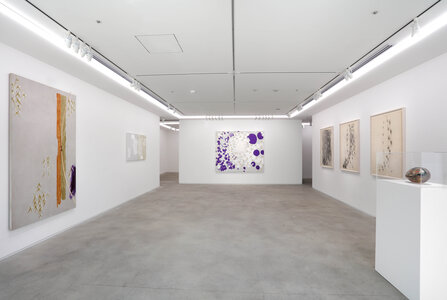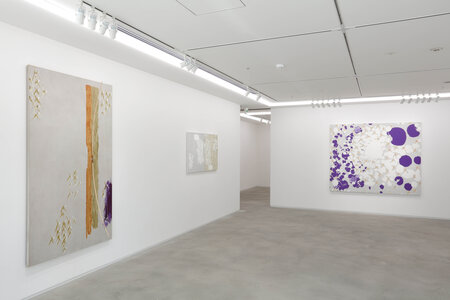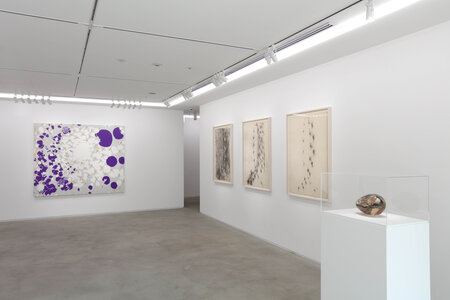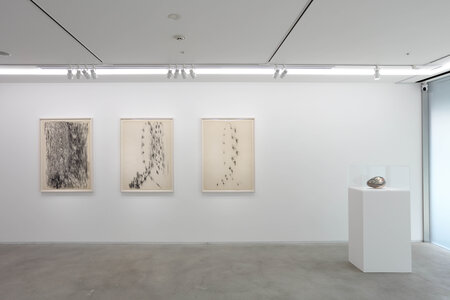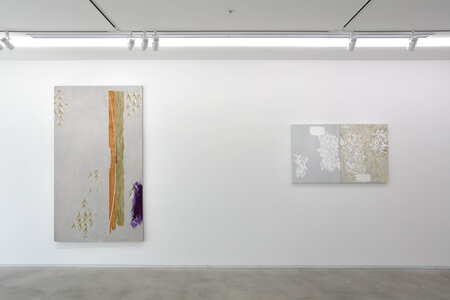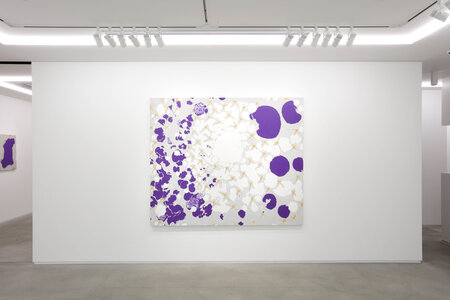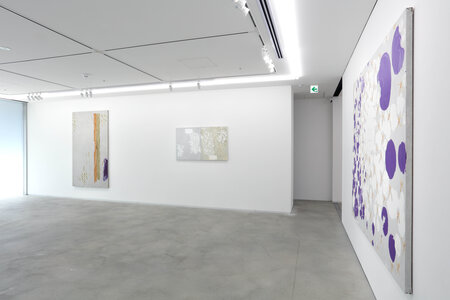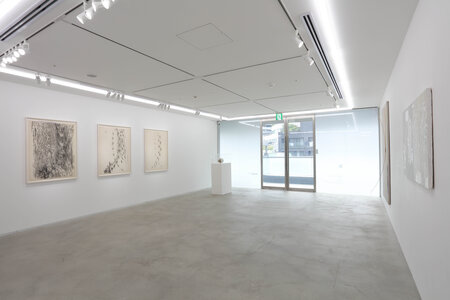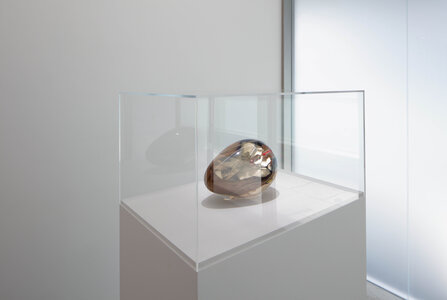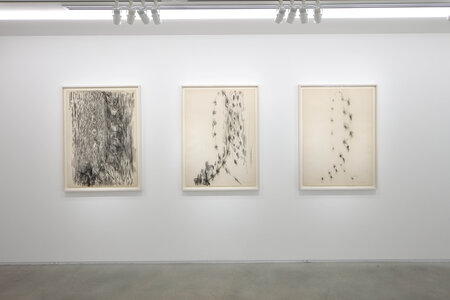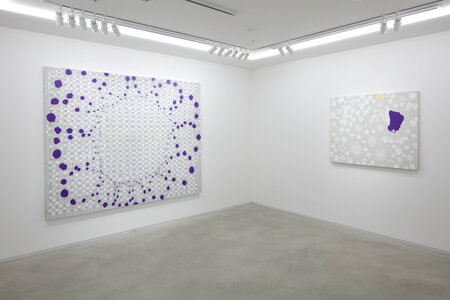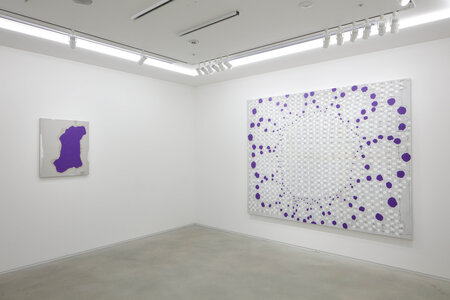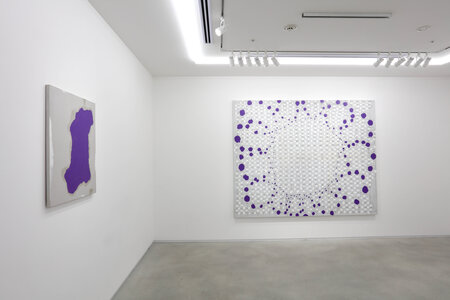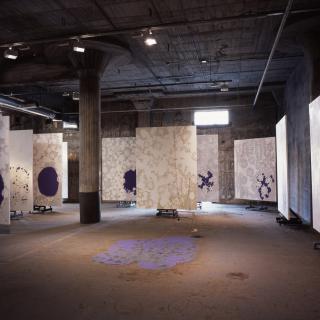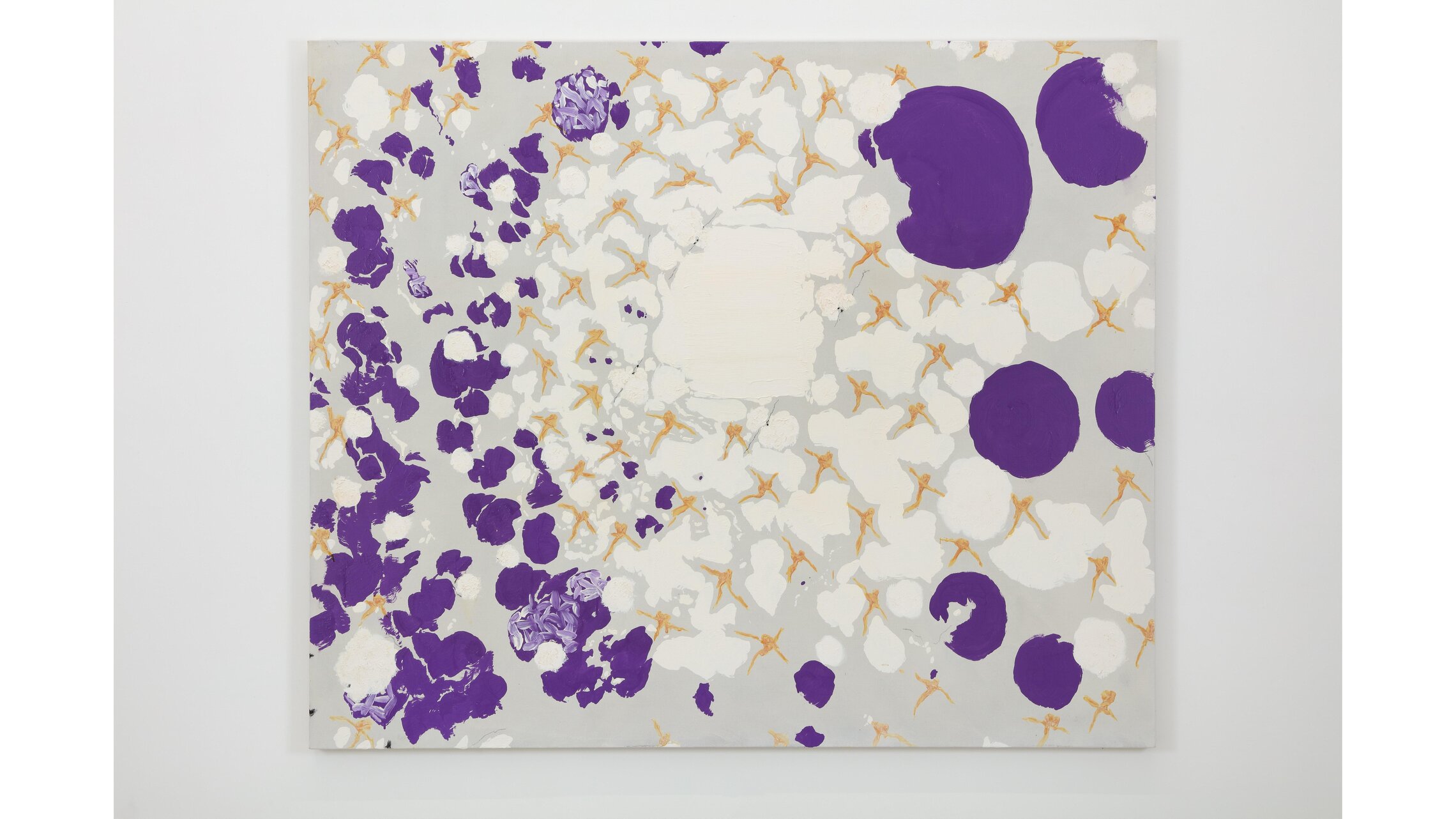
Natsuyuki Nakanishi: 1962 - 2011
Opening hours: 12:00 - 18:00
Closed on Sun., Mon., Tues., Wed. and National Holidays
Summer holidays: 10-18 August, 2024
Natsuyuki Nakanishi (1935-2016) developed a distinctive practice that extended across a range of genres, mediums, and disciplines, garnering acclaim as one of Japan’s most prominent post-war artists. The exhibition traces the trajectory of his work spanning half a century. The 10 works on view, many of which have never before been exhibited, include Compact Object, an oval sculpture used in performance to disrupt the everyday; Arch and Work L, the artist’s representative 1980s series which examine the spatial structure encompassing the canvas and the viewer; as well as paintings from the 2000s onward.
Natsuyuki Nakanishi: Questions to and from the artist
Artist Natsuyuki Nakanishi passed away in 2016. No substantial exhibition of his works has been held since the solo exhibition1 at Joshibi Art Museum in the following year, so 2024 presents a precious long-awaited opportunity to encounter his works.
Around ten previously unpublished works will be exhibited, ranging from a sculpture from the 1960s to experimental works from the 2010s. I imagine that staging such an exhibition as this would not have been possible during the artist’s lifetime, since Nakanishi invariably created and exhibited works in the form of series. It also seems likely that he was consciously pacing the distance from one series to another. I once suggested to him that there should be a catalogue raisonné of his works, but to my surprise, he rejected the idea. He said that his oeuvre was suited more to compilation into separate volumes rather than to a single volume arranged chronologically.
I have in the past referred to Nakanishi’s series as “chains of paintings.”2 Like a composer might play with a melody to create fugues, he would start with a particular motif and experiment on canvas after canvas through repetition and improvisation. He would often sit or stand right in front of one of his paintings or drawings to sketch it. This process of copying a work to seek ideas and inspiration for the next in the series is perhaps unique to Nakanishi. In my mind, he always aspired to experiment and probe the unknown, and the process of creating series of works was his way of achieving that end. So when I view any work of his, I always tend to think of it as a link in a chain, with other works coming before and after it.
Even if this is the case, it goes without saying that each and every canvas is a work in its own right, well able to stand on its merits. Individual paintings have already found their way into the collections of art museums around the world and will continue to do so, each contributing in their own way to the particular context. The chains of paintings are destined to unravel, each link turning into a memory or record of the chain it belonged to that will go on to become part of a new constellation and affiliation.
Even though the series concept was key to Nakanishi’s creative process and the way he presented his works during his lifetime, those works face a different future. It is now up to those of us who remain, those who want to continue to view his works, and those who encounter his works in the future to think about how they should be exhibited and viewed. The involvement of more and more people in the world of his oeuvre will no doubt open up new possibilities for enabling us to experience his works in as yet unknown ways.
When such a time comes, a Nakanishi archive will be required. We will want to know, after all, when particular works were created, with what intention, in what order, where they are now, and with what other works, and what the artist or others had to say about them. Fortunately, Nakanishi left a rich body of resources that shed light on such matters. In addition to his works, Nakanishi developed and shared unique and fascinating theories about painting. He also occasionally revealed some of the thoughts he had jotted down in his voluminous production notes. As evidenced by existing publications, his words have attracted a considerable following.
The titles of Nakanishi’s series of works themselves embody his ideas about art. Allow me to list some of the titles of such series to illustrate this point. Rhyme (1959-60), Hopscotch at the Summit (1969-71), Tangent Arc (1978), Work-L.l.R (1986), Square Bracket (1989), Middle-Swift White (1990), Touching Down on Land and Touching Down on Water (1995), Four Beginnings (2000), Background Color Reversed (2008). While radiating a poetic and reflective air, the words he chose for the titles are nevertheless straightforward descriptions of the purpose and characteristics of each series of works. Since the titles do not describe a generally recognizable motif such as “cat with nude,” they are not of course immediately understandable.
Since Nakanishi did not set out to specifically paint something on a canvas, asking what this or that painting depicts is “the wrong question.”3 It was rather through the act of painting itself that Nakanishi brought his works into being. When you face a “painting,” what kind of relationship can emerge between you and that peculiar entity? Where on the ground do you position yourself when facing the painting? Tugged from both left and right, where exactly is the middle of the work? What kind of space exists behind the painter? Can the other side of the painting turn into a parallel to this side of the painting, or...? There was no end to the concrete, substantive questions that Nakanishi posed, questions that it had never occurred to anyone else to ask before. And the act of constantly posing such questions served as the driving force behind the emergence of his paintings.
Nakanishi interacted with the canvas through his brushes, filling the space with a diversity of gorgeous, sensual, and delicate brushstrokes, his mind focused subjectively on the immediate present, the here and now, the time and place he was painting. He was an artist who “always used devices or tools to measure things in his own way.”4
Looking at Nakanishi’s paintings again, I find myself thinking about how far we are from the archive and where the questions are taking us.
1. I wish I cast seed toward the sun, exhibition at Joshibi Art Museum, 2017.
2. Chain of Paintings: Forest of Light: exhibition of new works by Natsuyuki Nakanishi, exhibition at Shoto Museum of Art, Shibuya, 2008.
3. Responding to interview questions, Nakanishi often started by saying, “That’s the wrong question to ask.” (2008)
4. Satoru Omori, “Sōkō ressyanai sono e no sonzai,” I wish I cast seed toward the sun, exhibition catalogue, p126.
